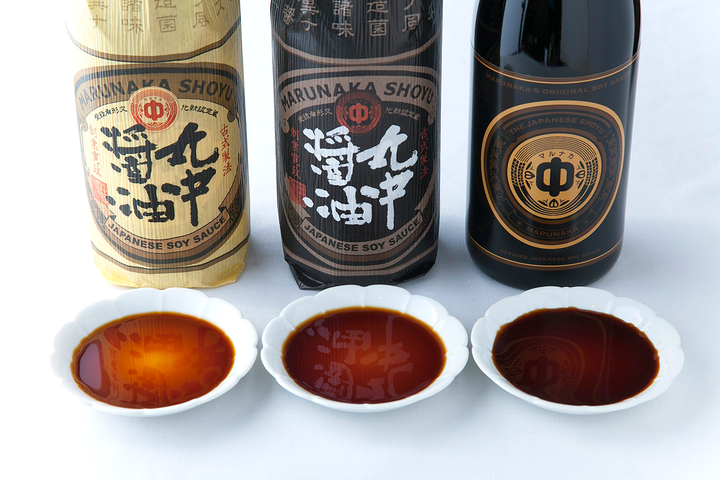What Is Yuzu Citrus? The Complete Guide to Japanese Lemon Benefits and Uses
Discover yuzu, the aromatic Japanese citrus with a complex flavor profile blending lemon, grapefruit, and mandarin notes. Rich in vitamin C and culinary versatility, this golden fruit enhances dishes worldwide and offers traditional health benefits in both cuisine and aromatherapy.

In the world of citrus fruits, few varieties captivate the senses quite like yuzu.
This small, golden fruit has become a culinary sensation far beyond its East Asian origins, inspiring chefs worldwide with its distinctive aroma and complex flavor profile.
Though sometimes referred to as "Japanese lemon," this remarkable citrus deserves recognition in its own right for its unique characteristics and versatile applications.
Origins and History
Yuzu (Citrus × junos) originated in central China's Yangtze River region before making its journey eastward through Korea and eventually arriving in Japan during the Nara Period (710-794).
While its roots lie in China, Japan has embraced yuzu so thoroughly that Japanese yuzu is now considered the standard worldwide.
The fruit represents a natural hybridization between a sour mandarin orange variety and another citrus called ichang papeda.
This heritage gives yuzu its distinctive characteristics and remarkable cold hardiness—an unusual trait among citrus trees.
Thanks to this cold tolerance, yuzu can thrive in Japan's cooler northern regions where other citrus varieties would struggle.
Patience is essential when cultivating yuzu. These slow-growing trees, recognizable by their thorny branches and aromatic leaves, require approximately ten years to mature fully and produce abundant fruit.
This extended maturation contributes to the fruit's complexity and is one reason yuzu products command premium prices.
Appearance and Sensory Profile
Visually, yuzu stands apart from common citrus fruits. Slightly larger than a golf ball but smaller than most grapefruits, yuzu typically measures between 5.5 to 7.5 centimeters in diameter.
Its exterior features a distinctively uneven, bumpy skin that transitions from green to golden-yellow as it ripens. Inside, you'll find a seedy, pale yellow flesh that contains relatively modest amounts of juice compared to other citrus varieties.
The true magic of yuzu lies in its extraordinary sensory profile. Its flavor combines the tartness of lemon with the subtle bitter notes of grapefruit and hints of mandarin sweetness, creating a multidimensional taste experience unlike any other citrus.
Most remarkable is yuzu's intense fragrance—a complex bouquet that's simultaneously floral, zesty, and slightly pine-like. This powerful aroma makes yuzu valuable not just in cuisine but also in perfumery and aromatherapy.
Nutritional Benefits
Beyond its culinary appeal, yuzu offers impressive nutritional benefits. The fruit contains approximately three times more vitamin C than conventional lemons, making it an excellent immune system supporter.
Its high concentration of citric acid—about 4.5%, or triple that of standard lemons—contributes to its tart flavor while offering potential digestive benefits.
Yuzu also contains beneficial antioxidants, including flavonoids and carotenoids, which may help reduce inflammation and support overall health.
These nutritional properties have contributed to yuzu's traditional use in East Asian wellness practices.
Yuzu Culinary Applications
While yuzu is rarely consumed as a fresh fruit due to its intense tartness and numerous seeds, its culinary applications are remarkably diverse. Both the aromatic zest (outer rind) and the juice have become indispensable ingredients in modern kitchens.
In traditional Japanese cuisine, yuzu appears in numerous preparations:
Ponzu sauce combines yuzu juice with soy sauce to create a tangy, savory condiment perfect for dipping tempura, sashimi, or grilled meats. The citrus brightness cuts through rich dishes beautifully.
Yuzu kosho transforms green, unripe yuzu (ao-yuzu) into a vibrant condiment by blending its zest with green chili peppers and salt. This Kyushu specialty adds complex heat and citrus notes to soups, noodles, and grilled dishes.
Yuzu gama represents an elegant presentation style where the hollowed-out yuzu fruit becomes a natural serving vessel. The fruit's top is removed, the interior scooped out, and the resulting "bowl" filled with delicate seasonal ingredients.
The surrounding yuzu skin infuses the dish with its aromatic essence. This presentation frequently appears during Japanese New Year celebrations and in refined kaiseki multi-course meals.
Contemporary chefs worldwide have embraced yuzu's versatility. Its juice brightens seafood dishes and vinaigrettes.
The aromatic zest enhances desserts from cheesecakes to soufflés.
Mixologists incorporate yuzu into craft cocktails for complexity beyond what standard citrus can provide.
Even a few drops of yuzu can transform familiar recipes with its distinctive character.
Cultural Significance
Yuzu's importance in Japanese culture extends well beyond the kitchen. One of its most beloved traditional uses occurs during the winter solstice, when whole yuzu fruits or yuzu peel are added to hot baths—a practice known as yuzu-yu or yuzu-buro.
This custom, dating back to at least the early 18th century, is believed to warm the body, improve circulation, nourish the skin, and prevent winter illnesses.
The tradition likely connects to both the fruit's aromatic properties and linguistic coincidence—in Japanese, the word for winter solstice (tōji) sounds similar to the word for bathing in hot springs.
The practice remains popular in homes and public bathhouses throughout Japan.
Modern Cultivation and Availability
Today, Japan produces approximately 27,000 tons of yuzu annually. More than 80% comes from the Shikoku region, with Kochi Prefecture alone responsible for over 50% of national production.
Kochi's climate and topography create ideal growing conditions, contributing to the exceptional quality of its yuzu harvest.
The primary harvest season runs from October through early winter, though unripe green yuzu may be harvested earlier for specific culinary applications.
Like all citrus, yuzu doesn't continue ripening after harvest, creating logistical challenges for distribution.
While fresh yuzu remains difficult to find in many Western markets, processed yuzu products have become increasingly available globally.
Bottled yuzu juice, yuzu vinegar, freeze-dried yuzu powder, and yuzu-infused condiments offer accessible ways to experience this remarkable citrus. The fruit's growing international popularity has also inspired cultivation in other regions with suitable climates, including California, Spain, Italy, Australia, and New Zealand.
Incorporating Yuzu Into Your Kitchen
Even without access to fresh yuzu, you can explore its distinctive character through various products:
- Bottled yuzu juice provides the simplest entry point. Just a few drops can transform salad dressings, marinades, or seafood dishes with its bright, complex flavor.
- Yuzu kosho paste offers an intriguing combination of citrus and heat. Try a small amount with grilled meats, noodle soups, or vegetable dishes.
- Yuzu marmalade showcases the fruit's aromatic qualities in a sweetened form. Beyond toast, it makes an excellent glaze for poultry or addition to yogurt.
- Dried yuzu peel can be ground into powder for adding citrus notes to spice blends, baked goods, or even tea.
When experimenting with yuzu, start with small amounts—its potent flavor can quickly dominate a dish. Consider replacing part (rather than all) of the lemon or lime juice called for in recipes as you become familiar with yuzu's unique character.
The journey of yuzu from Chinese origins to Japanese cultural icon to global culinary star demonstrates how exceptional flavors transcend borders.
This remarkable citrus, with its complex sensory profile and versatile applications, continues to inspire culinary innovation while honoring its rich heritage.
As more people discover yuzu's golden treasures, its future looks as bright as its sunny exterior.


